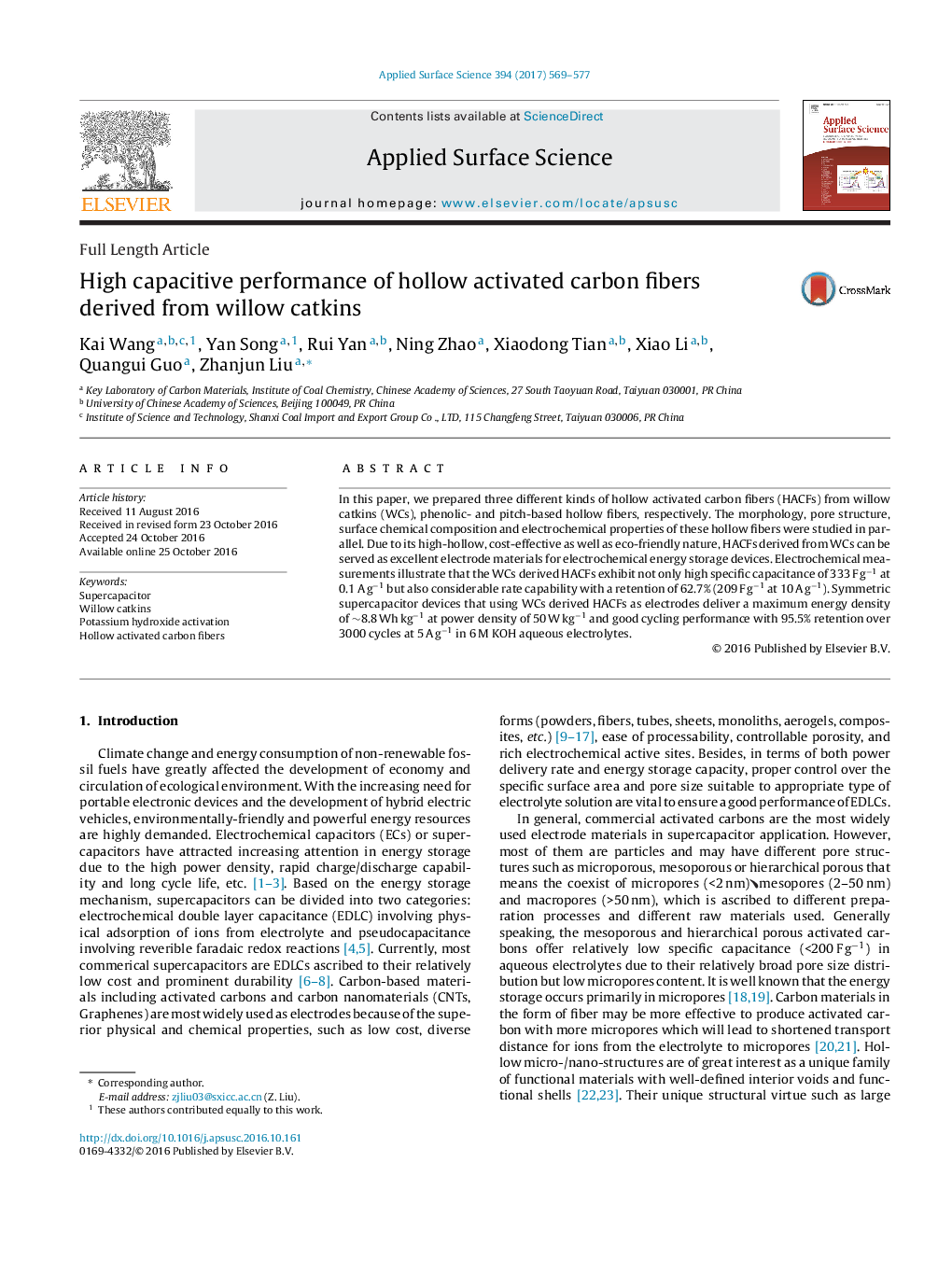| Article ID | Journal | Published Year | Pages | File Type |
|---|---|---|---|---|
| 5352942 | Applied Surface Science | 2017 | 9 Pages |
â¢Hollow activated carbon fibers (HACFs) are prepared from biomass waste willow catkins.â¢The HACFs possess high microporous specific surface area(1067 m2 gâ1) with concentrated pore size distribution and rich heteroatom-doped functional groups.â¢The HACFs-based electrode exhibit excellent electrochemical properties of high specific capacitance, considerable rate capability and high energy density.
In this paper, we prepared three different kinds of hollow activated carbon fibers (HACFs) from willow catkins (WCs), phenolic- and pitch-based hollow fibers, respectively. The morphology, pore structure, surface chemical composition and electrochemical properties of these hollow fibers were studied in parallel. Due to its high-hollow, cost-effective as well as eco-friendly nature, HACFs derived from WCs can be served as excellent electrode materials for electrochemical energy storage devices. Electrochemical measurements illustrate that the WCs derived HACFs exhibit not only high specific capacitance of 333 F gâ1 at 0.1 A gâ1 but also considerable rate capability with a retention of 62.7% (209 F gâ1 at 10 A gâ1). Symmetric supercapacitor devices that using WCs derived HACFs as electrodes deliver a maximum energy density of â¼8.8 Wh kgâ1 at power density of 50 W kgâ1 and good cycling performance with 95.5% retention over 3000 cycles at 5 A gâ1 in 6 M KOH aqueous electrolytes.
Graphical abstractDownload high-res image (142KB)Download full-size image
